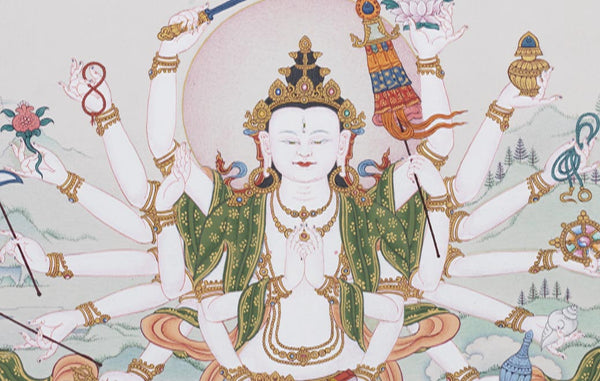"Though my view is as spacious as the sky, my actions and respect for cause and effect are as fine as grains of flour." - Padmasambhava
What is Samatha Meditation?
Samatha is a Buddhist term that is often translated to the “tranquility of the mind.” Samatha meditation is also known as a calming and soothing meditation. It is known for bringing a laser-like, sharp focus to our “monkey” mind. And this sharp focus is brought by virtue of removing our usual clutter of thoughts and ideas. It thus makes the mind single-pointed and hence, enables us to see things more clearly as we are free from our delusions.
Why does Samatha Precede Vipassana?
The Buddha has said that Samatha and Vipassana are the two messengers. These two messengers deliver the message of Nirvana (Nibbana) rather swiftly. Many Buddhist traditions consider Samatha to be performed as an antecedent to Vipassana, which is the insight meditation. Basically, Samatha is the practice to keep the mind calm, whereas Vipassana focuses on a more insight-based meditation that helps to clear the mind. The former emphasizes on a single unit of focus whilst the latter sees thoughts and sensations as important to experience, to finally disregard them as futile or impermanent and non-self. Without centering our attention on a single phenomenon, or one object, we cannot get insight on our experiences. This is the reason why in practiced meditation, Samatha always precedes Vipassana.
The Buddhist Meditation Process
The Buddhist meditation practice can be roughly categorized into three types. It is a process that begins with Morality (sila), and is continued with Concentration (samadhi), to finally conclude with Wisdom (panna). And these two messengers somewhat fall in the middle. It is the calm and serene mind that leads us to ground-shattering insights into the true nature of reality. And this ultimately results in the kind of wisdom that exterminates all indispositions and brings about enlightenment.

How is Samatha Meditation Performed?
There are altogether forty meditation techniques to practice Samatha. However, the Buddha has long outlined the following process as the principal way to perform the Samatha meditation. It is done through the “mindfulness of breathing” or Anapanasati. Following are the steps taught by the Buddha:
- Sit in your normal meditation posture
- Straighten your back as if stacking one vertebra on top of the other. Your spine is the main conduit of your central nervous system, so it is important to keep it erect
- Relax your shoulders and keep the head evenly balanced and tuck your chin slightly inwards
- Let your tongue touch the palate
- Relax your face
- Close your eyes
- Focus your mind on the rising and falling of breath
- Specifically, bring attention to the small triangular area between your upper lip and the nostrils and feel every in-breath and out-breath
- Whenever the mind wanders, gently bring it back to the awareness of the breath flowing in and out
The Benefits of Practice
This practice not only helps to calm the mind, but also statistically increases our concentration by a large margin. This determination of the mind leads to the experience of spaciousness – spaciousness being one of the three gateways involved in advanced meditation techniques. Samatha meditation, though very gentle, is supposedly a very effective method of training the mind. It helps us to develop our core strength and to free ourselves from the turmoil of the mind. An individual can then be happier, and have a sharper, unified state of mind. It leads to clarity and gain an understanding and perception of the world. Not to mention the fact that this process of calmness (samatha) to insight (vipassana) was followed by the Buddha himself and to this day remains a central tradition of Buddhist meditation.
Our scattered and unkempt mind eventually becomes calmer and clearer through the regular practice of this meditation. The inner workings of our mind and our thought processes start to become less convoluted and becomes less confusing to us. It is then that we begin to understand the old habits of mind that have held us back from attaining happiness and freedom. This realization makes us act kindlier to ourselves and those around us.
The Ultimate Liberation from Suffering
Those people who are seeking for a method to develop a daily meditation practice; this form of meditation is quite suitable for them. Those individuals can reap all the benefits that it is sure to bring, whilst continuing with the challenges of everyday life. The moment of spaciousness is the ultimate healing moment. This is when the much-sought for vipassana (insight) is bound to occur. This is also how the foundation for Satipatthana Meditation is laid.
As one develops one’s meditative practice, one ought to focus on these two types of meditations. Then only can one have piercing insights into the physical and mental phenomena occurring in the world around us. These insights would lead to the realization of the omnipresent impermanence. And finally, it leads us to the liberation from suffering.



1 comment
Pema Lhendup
M VERY HAPPY TO KNOW HOW IT WORKS IN DAY TO DAY LIFE